8V Series Cast Iron Eight-Groove QD Sheaves for “8V” Belts
8V series eight-groove QD (quick detachable) bushed sheaves are manufactured for 8V and 8V banded belts. They range from 12.50″ to 63.00″ in diameter. Depending on the sheave size, they are made to use a J, M, N, or P QD bushing, which we also stock. Most of our eight-groove 8V QD sheaves are manufactured from a high-strength grade 35 cast iron, are phosphate-coated, and are painted for anti-corrosion. All of them are balanced at the factory for smooth machinery operation.
8V Series Cast Iron Eight-Groove QD Sheaves for “8V” Belts
8V series eight-groove QD (quick detachable) bushed sheaves are manufactured for 8V and 8V banded belts. They range from 12.50″ to 63.00″ in diameter. Depending on the sheave size, they are made to use a J, M, N, or P QD bushing, which we also stock. Most of our eight-groove 8V QD sheaves are manufactured from a high-strength grade 35 cast iron, are phosphate-coated, and are painted for anti-corrosion. All of them are balanced at the factory for smooth machinery operation.
Eight-Groove 8V QD Sheave Size Chart
|
Sheave Size
|
Bushing
|
Type
|
Pitch Diameter (P.D.)
|
Outside Diameter (O.D.)
|
(E)
|
(F)
|
(L)
|
(M)
|
Weight (LBS)
|
|---|---|---|---|---|---|---|---|---|---|
| 88V1250J | J | A | 12.30 | 12.50 | 2-1/8″ | 9-3/8″ | 4-5/8″ | 2-5/8″ | 131 |
| 88V1320J | J | A | 13.00 | 13.20 | 2-1/8″ | 9-3/8″ | 4-5/8″ | 2-5/8″ | 160 |
| 88V1400J | J | A | 13.80 | 14.00 | 2-1/8″ | 9-3/8″ | 4-5/8″ | 2-5/8″ | 175 |
| 88V1500J | J | A | 14.80 | 15.00 | 2-1/8″ | 9-3/8″ | 4-5/8″ | 2-5/8″ | 186 |
| 88V1600J | J | A | 15.80 | 16.00 | 2-1/8″ | 9-3/8″ | 4-5/8″ | 2-5/8″ | 210 |
| 88V1700M | M | A | 16.80 | 17.00 | 2-11/32″ | 9-3/8″ | 6-3/4″ | 9/32″ | 221 |
| 88V1800M | M | A | 17.80 | 18.00 | 2-11/32″ | 9-3/8″ | 6-3/4″ | 9/32″ | 235 |
| 88V1900M | M | A | 18.80 | 19.00 | 2-11/32″ | 9-3/8″ | 6-3/4″ | 9/32″ | 250 |
| 88V2000M | M | A | 19.80 | 20.00 | 2-11/32″ | 9-3/8″ | 6-3/4″ | 9/32″ | 265 |
| 88V2120M | M | A | 21.00 | 21.20 | 2-11/32″ | 9-3/8″ | 6-3/4″ | 9/32″ | 280 |
| 88V2240M | M | A | 22.20 | 22.40 | 2-11/32″ | 9-3/8″ | 6-3/4″ | 9/32″ | 295 |
| 88V2480N | N | A | 24.60 | 24.80 | 3/16″ | 9-3/8″ | 8-1/8″ | 1-1/16″ | 320 |
| 88V3000N | N | A | 29.80 | 30.00 | 3/16″ | 9-3/8″ | 8-1/2″ | 1-1/16″ | 375 |
| 88V3550N | N | A | 35.30 | 35.50 | 3/16″ | 9-3/8″ | 8-1/8″ | 1-1/16″ | 442 |
| 88V4000N | N | A | 39.80 | 40.00 | 3/16″ | 9-3/8″ | 8-1/8″ | 1-1/16″ | 530 |
| 88V4450P | P | B | 44.30 | 44.50 | 1/4″ | 9-3/8″ | 9-3/8″ | 1/4″ | 610 |
| 88V5300P | P | B | 52.80 | 53.00 | 1/4″ | 9-3/8″ | 9-3/8″ | 1/4″ | 795 |
| 88V6300P | P | B | 62.80 | 63.00 | 1/4″ | 9-3/8″ | 9-3/8″ | 1/4″ | 995 |
Related Matching 8V, 8V Banded Series V-Belt
(1) 8V-Series V-Belts
Classic 8V-Series V-Belts have a 0.63″ top-width, 0.53″ thickness, and a 38° angle. Additionally, 8V V-belts are one of the oldest styles of V-Belts in the industry. Because of their long-term success and economical operation, they are also one of the industry’s most widely used belt series. The premium 8V-series v-belts we supply are manufactured under ISO 9001 specifications, are oil and heat resistant, and directly interchange with other brands. They are constructed of a natural rubber compound with polyester cords and use cotton with a polyester blend cover for high durability.
 (2) 8V-Series Banded V-Belts
(2) 8V-Series Banded V-Belts
8V-series v-belts are a part of the “classic” lineup of v-belts because they are one of the oldest style belts used and one of the most common. Our belts are manufactured by ARPM standards and offer superior strength, durability, and performance. 8V-series v-belts have a 1.0″ top-width per belt (band/ rib).
Related QD Bushings | Quick Disconnect Bushings
QD bushings are utilized throughout the industrial power transmission and agricultural industry for various sprockets, sheaves, pulleys, and synchronized drives. They are designed for easy installation and easy uninstallation; they are also commonly referred to as quick-disconnect bushings. QD bushings can help conventional mounting with the flange outboard and reverse mounting to where the flange is inboard and utilize a single split that extends through the entire bushing length. Our QD bushings interchange with other brands and are made from high-grade steel precision machined for perfect application fitment. QD bushings‘ benefits over different styles include; ease of installation/ uninstall, superior holding power, and extreme strengths. We stock all the standard sizes of QD bushings and supply custom QD bushings upon request, including stainless steel ones. QD bushings are found in some of the most rugged applications worldwide; contact our customer service team today for a quote or additional information on our premium QD bushings.
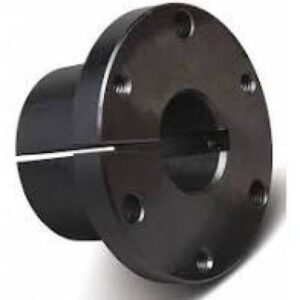 |
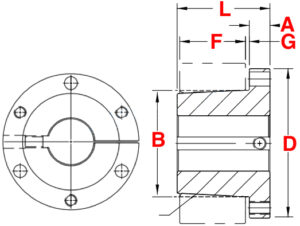 |
|
Bushing Type
|
(A)
|
(B)
|
(D)
|
(E)
|
(F)
|
(G)
|
(L)
|
Bolt Circle
|
Cap Screws Required
|
Min. Stock Bore
|
Max. Bore W/ KW
|
Max Bore W/ Shallow KW
|
Set Screw Size
|
Avg. Weight (LBS)
|
|---|---|---|---|---|---|---|---|---|---|---|---|---|---|---|
| J | 1.000″ | 5.148″ | 7.250″ | 3.500″ | 3.188″ | 0.423″ | 4.500″ | 6.250″ | 3 – 0.625X4.5 | 1.438″ | 3.750″ | 4.500″ | 0.625 – 11 | 18.0 |
| M | 1.250″ | 6.500″ | 9.000″ | 5.500″ | 5.188″ | 0.423″ | 6.750″ | 7.875″ | 4 – 0.75X6.75 | 1.938″ | 4.750″ | 5.500″ | 0.75 – 10 | 37.0 |
| N | 1.500″ | 7.000″ | 10.25″ | 6.625″ | 6.250″ | 0.423″ | 8.125″ | 8.500″ | 4 – 0.875X8.5 | 2.438″ | 5.125″ | 6.000″ | 0.75 – 10 | 57.0 |
| P | 1.750″ | 8.250″ | 11.75″ | 7.625″ | 7.250″ | 0.423″ | 9.375″ | 10.00″ | 4 – 1X9.5 | 2.938″ | 5.983″ | 7.000″ | 0.875 – 9 | 120.0 |
Daily Inspection of the Pulley to See These 3 Aspects Will Do
The pulley is a worn part that often shakes and slips during long-term operation. If the pulley is not checked regularly, it will also cause damage to the machine for a long time and with directly damaged in severe cases. Therefore, in daily use, we should regularly check the pulley. What aspects of the pulley should be reviewed?
Check these three aspects of the v belt pulley daily:
1. Pulley surface: All standard pulleys are weighted according to the standard. If there are bump marks on the surface of the pulley, it is necessary to observe whether the pulley shakes during operation. If there is vibration, replacing the pulley in time is essential.
2. Pulley belt: The pulley is driven by a belt, so we also need to check the belt regularly. After installation, we should first observe the tightness of the belt. If the building is too tight, it will affect the speed of the pulley. In severe cases, the motor shaft may be worn. If the installation is too loose, it may reduce the machine’s working efficiency and cause slippage. If the belt has low aging tension, we need to replace the belt in time.
3. Pulley mounting hole: The mounting hole of the pulley is in direct contact with the motor shaft and is also an essential part of determining whether the machine can run. We need to regularly observe whether the installation holes are clean and whether there are impurities in them. Because contaminants are likely to damage the mounting holes, if mounting holes are damaged, the pulley will not be able to use.
What Are the Pulleys Used For?
The pulley belongs to the hub-type parts. Generally, the relative size is relatively large. The manufacturing process is usually based on casting and forging. Use less cast steel (steel has poor casting performance); generally, smaller sizes can be designed for development, and the material is steel). The pulley is not only used on the car; it is mainly used to transmit power over long distances. It has many applications, such as the power output of small diesel engines, such as tractors, cars, etc. It is also used in mechanical transmissions, such as machining equipment, textile machinery, lathes, and forging machines.
Technological Processing
Packaging & Shipping
Experienced Workers Packing Pulleys Carefully, safe wooden cases. By sea or air shipment.

Packing Shipping Delivery
  |
 |
|
 |
 |
|
How to choose power transmissions parts and industrial products which meet our requirement
| Chains | Sprockets | Pulleys | Timing belt Pulley | V-belt Pulley |
| Sheaves | Coupings | Bush &Hub | Gear& Rack | V-Belt |
| Locking Assembly | Pulley | Gearbox | Reducer | Shaft Collar |
| Rod End Bearing | Clevis | PTO | Chain Guide | Belt Guide |
| Rubber Buffer | Chain Tensioner | PTO Drive Shafts | Universal Joints | Roller Chains |
| Conveyor Chains | V-Belts | Worm Gearbox | Helical Gear | Worm |
| Agricultural Chain | CNC Proces Parts | Casting | Stamping | |
| Powder Metallurgy | CNC Proces Parts | Casting | Stamping |
What Products Do you sell ?
We are a group of factories, give customer one stop solution of power transmission and industrial products. We are in the position to supply wide range of products, including chains, sprockets, v-belt and v-belt pulleys, timing belt and timing belt pulleys, gears, speed reducers, motors, racks, couplings, and many other parts, like locking assembly, taper bushing, Chain guide, shaft collar, torque limiter, cam clutch, universal joint, motor base and motor slide, rod end, clevis, rubber mount, etc. We make special parts according to drawings and/or samples.
How to choose a gearbox which meets our requirement?
You can refer to our catalogue to choose the gearbox or we can help to choose when you provide
the technical information of required output torque, output speed and motor parameter etc.
What information shall we give before placing a purchase order?
a) Type of the gearbox, ratio, input and output type, input flange, mounting position, and motor informationetc.
b) Housing color.
c) Purchase quantity.
d) Other special requirements.
What industries are your gearboxes being used?
Our gearboxes are widely used in the areas of textile, food processing, beverage, chemical industry,
escalator,automatic storage equipment, metallurgy, tabacco, environmental protection, logistics and etc.
What is the producing process?
Production process including raw material cutting, machine processing, grinding, accessories cleaning, assemble, cleaning, stoving, oil coating, cover pressing, testing, package.
How to control the products quality?
Combining advanced equipment and strict management, we provide high standard and quality bearings for our customers all over the world.
What is the transportation?
-If small quantity , we Suggest to send by express, such as DHL,UPS, TNT FEDEX. If large amount, by air or sea shipping.
Can we design packaging?
-Yes. Default is regular packing, and we can make customer's own packing.
Can you provide OEM service?
-Yes, we work on OEM orders. Which means size, quantity, design, packing solution, etc will depend on your requests; and your logo will be customized on our products.
Can you give me discount on Power Transmissions Parts and Industrial parts?
-Yes, of course. Pls. send me your Email, you'll get more
Q: Are You a trading company or a manufacturer?
A: We Are the factory and have our Own trading company
Q: How Can I get an offer?
A: please send US quotation information: drawings, materials, weight, quantity and requirements, we can accept PDF, ISGS, DWG, STEP file format. If you don't have the drawings, please send us the samples, we can also quote you according to your samples.
Q: What is your minimum order size?
A: it is usually 100 pieces, but a low quantity is acceptable under some special circumstances.
Q: Do you provide samples? Is it free or extra?
A: Yes, we can provide samples free of charge, but we don't pay the freight.
Q: What is the lead time for mass production?
A: honestly, it depends on the number of orders. Normally, if you don't need the tools, deposit them after 30 days or so.
Q: What if the parts don't Work?
A: we can guarantee the quality, but if it happens, please contact us immediately, take some photos, we will check the problem and solve it as soon as possible.
Q: What are your terms of payment?
A: payment is less than US $1000,100% in advance. Payment: $1000,50% wire transfer in advance, balance before shipment,Other Terms of payment are negotiable


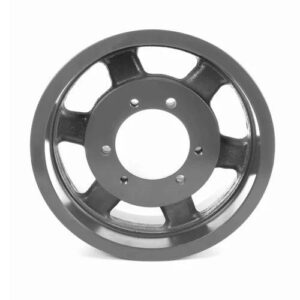
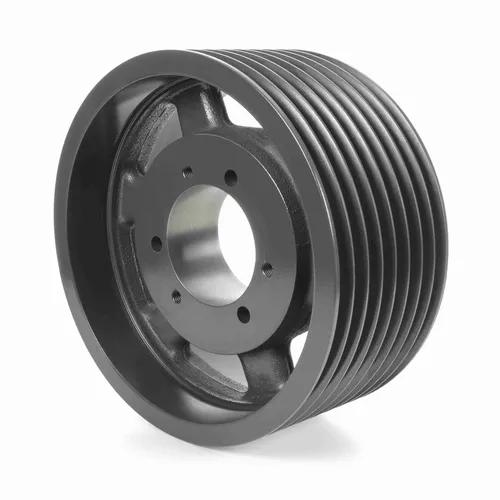
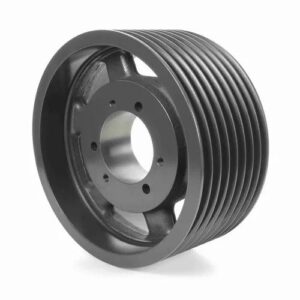
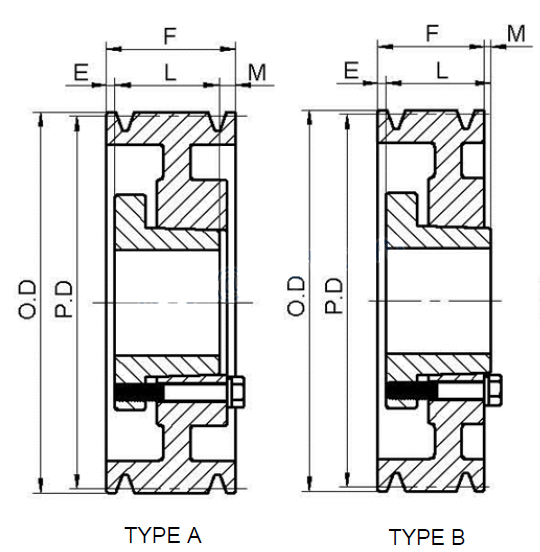
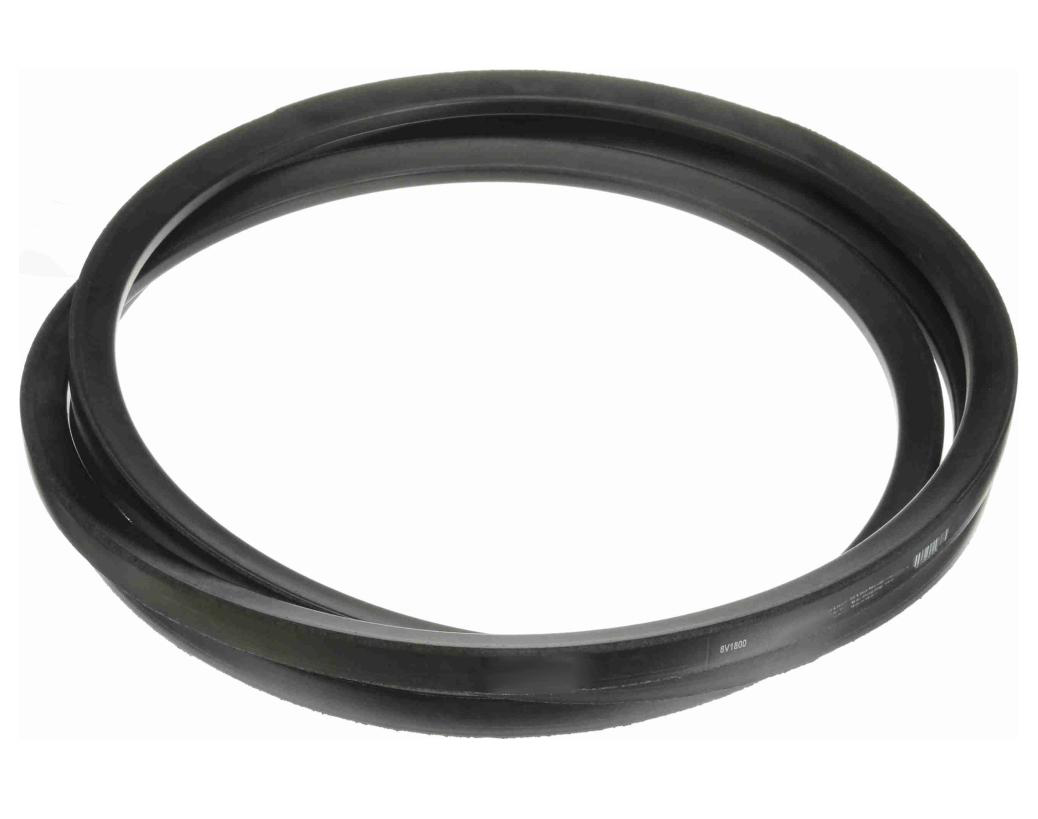 (2) 8V-Series Banded V-Belts
(2) 8V-Series Banded V-Belts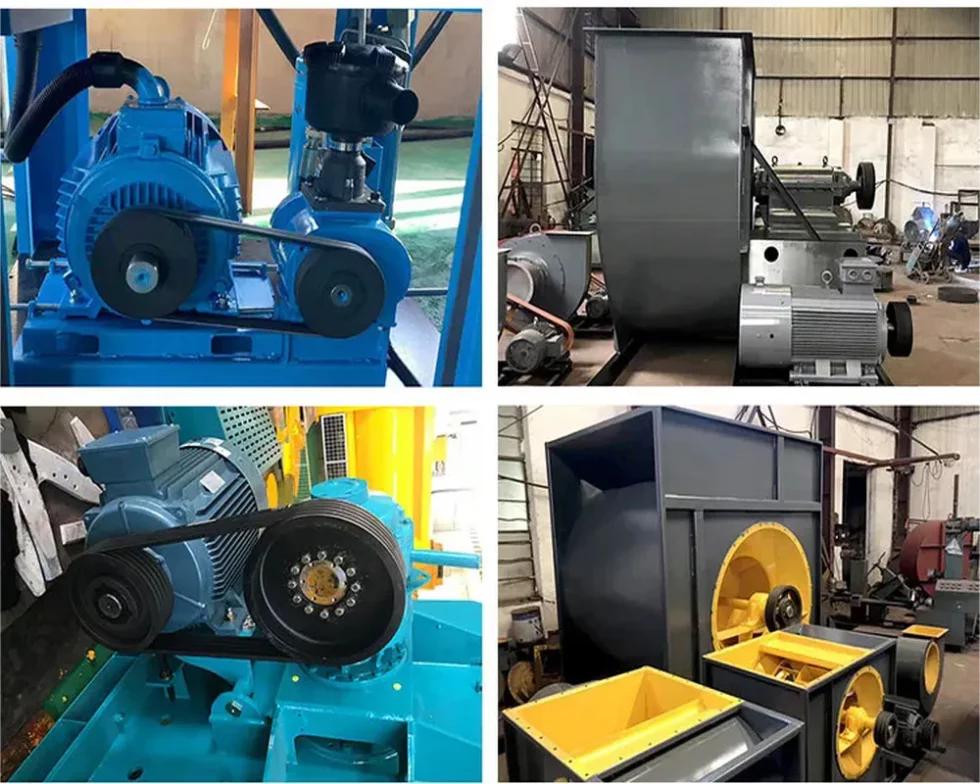
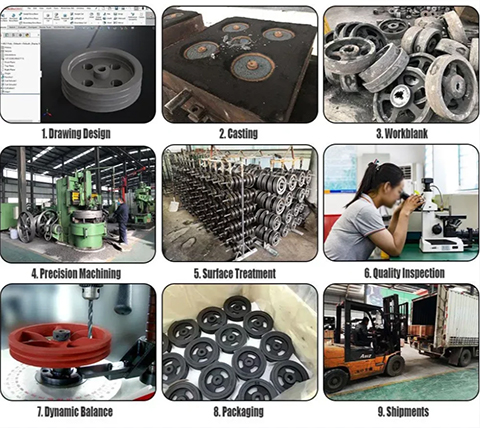

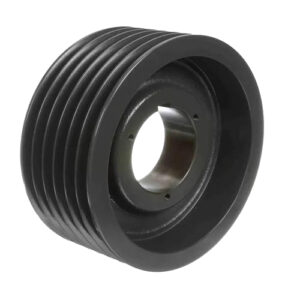
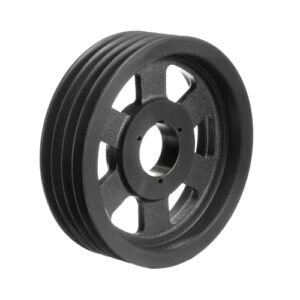

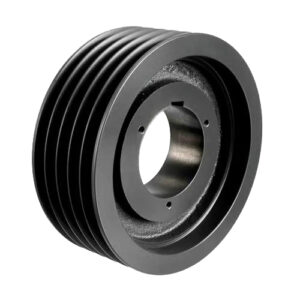
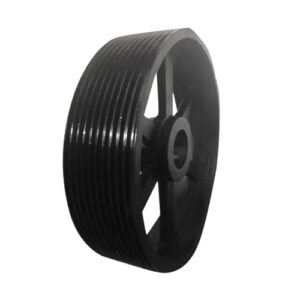
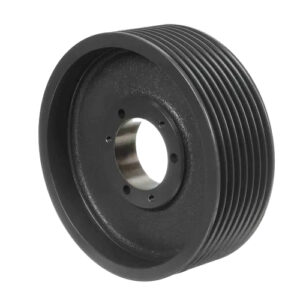
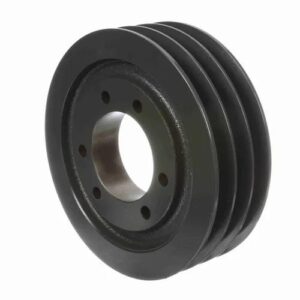
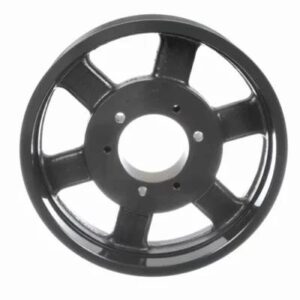
Reviews
There are no reviews yet.